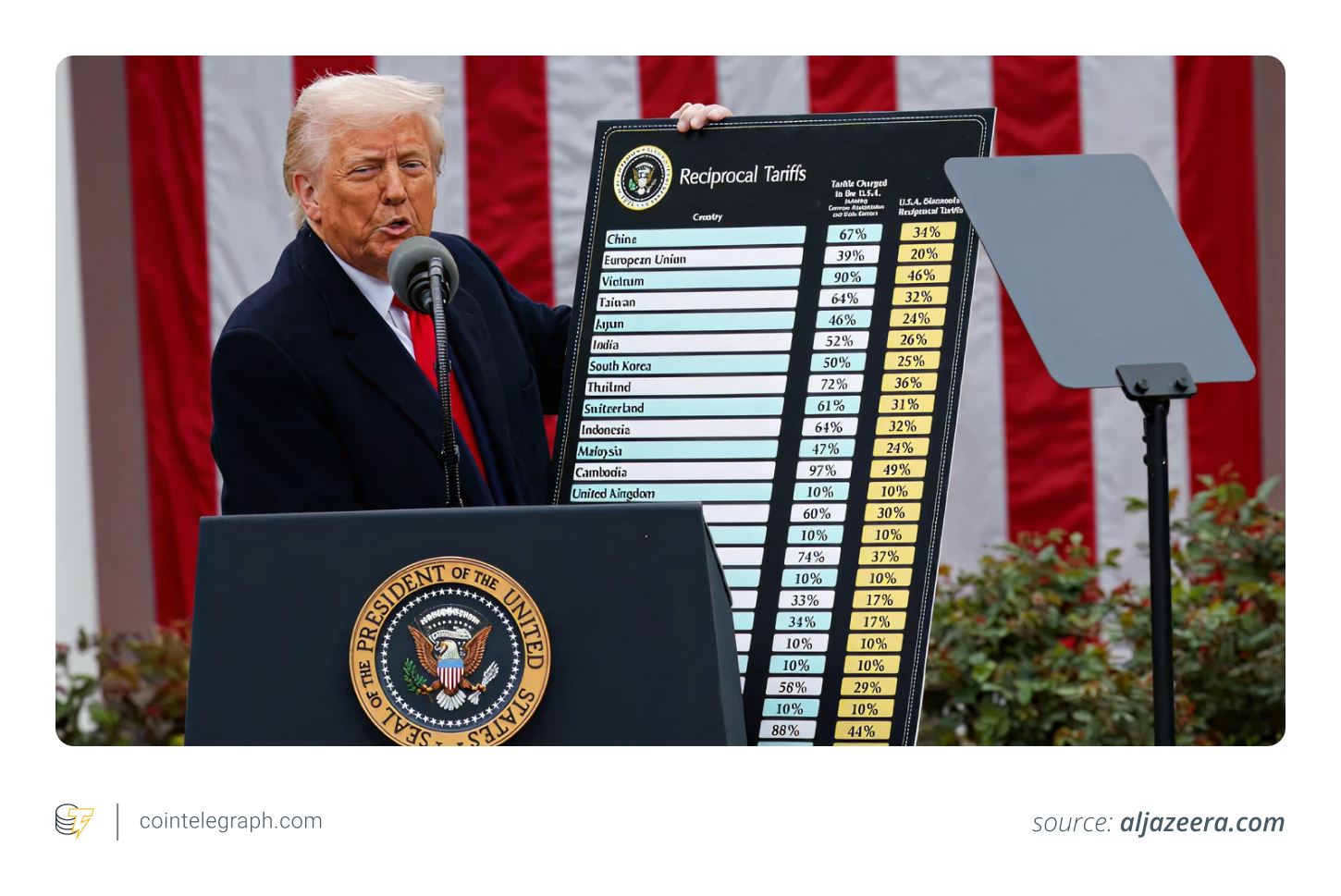The 2025 US-China trade war On April 2, 2025, President Donald Trump declared a national economic e
The 2025 US-China trade war
On April 2, 2025, President Donald Trump declared a national economic emergency and announced sweeping new import tariffs.
Dubbed “Liberation Day,” the policy set a baseline 10% tariff on all foreign goods, with a massive 145% rate on products from China. The move was framed as a way to fix long-standing trade imbalances and protect national industries.
China responded almost immediately. Tariffs on US imports jumped to 125%, and restrictions were introduced on the export of rare earth elements, materials essential to global manufacturing. Within days, trade between the world’s two largest economies had slowed dramatically.

The markets didn’t take it well. The S&P 500 dropped 15% in under a week. The Nasdaq was down nearly 20% for the year by April 7. Investors were rattled by the scale of the escalation and the potential knock-on effects on global growth.
Crypto didn’t stay quiet either. As stocks fell and uncertainty spread, Bitcoin (BTC) saw a surge in trading volumes, with many turning to digital assets as a hedge.
What follows is a closer look at how these trade tensions hit financial markets, starting with traditional stocks and then crypto.
Trade wars’ impact on stocks
Markets don’t like surprises – and they really don’t like trade wars.
When the US announced its 145% tariff on Chinese imports in April 2025, the response from Wall Street was swift and brutal. The S&P 500 tanked more than 10% in just two days. Tech stocks took it even harder, with the Nasdaq shedding nearly 20% since the start of the year.
Still, if you’ve watched the markets through past trade fights, this was all pretty familiar. In 2018–19, during the first round of US-China tariff battles, every tweet about negotiations or new duties sent stocks whipsawing. And if you zoom way out, the Smoot-Hawley Tariff Act of 1930 is one of the earliest and most notorious examples as tariffs piled up, global trade shrank and the Great Depression got worse.
So why do stocks get hit so hard? A few reasons. Tariffs raise the cost of imported goods, which squeezes profit margins for companies that rely on international supply chains. When a carmaker or electronics brand has to pay more for components, that cost either eats into profits or gets passed on to customers. Either way, it’s bad news for earnings, and earnings are what drive stock valuations.
There’s also the fear factor. Trade wars inject a lot of uncertainty into the economy. Will more tariffs follow? Will other countries retaliate? That kind of unpredictability causes companies to delay investments and hiring, while consumers may start pulling back on spending. This shows up as increased market volatility, often tracked by the VIX, Wall Street’s so-called “fear index,” which tends to spike in times like this.

Central banks sometimes try to cushion the blow by tweaking interest rates or injecting liquidity. But there’s only so much they can do when the root of the problem is political.
Did you know? On April 9, 2025, Trump announced a 90-day pause on new tariffs for most countries. He explained the pause by saying people were getting “a little bit yippy,” his way of describing nervousness in the markets.
When tariffs hit, crypto takes a punch, then bounces back
The tariffs hit crypto, too, but the market recovered just days later, reflecting crypto’s volatile yet responsive nature during global uncertainty.
After Trump’s new tariffs were announced, Bitcoin slid to around $76,000. Ethereum and other major tokens followed suit, and around $200 billion was wiped off the total crypto market cap in a few days.
Again, this kind of sell-off isn’t unusual. When uncertainty spikes – like during a sudden escalation in global trade tensions – investors tend to play it safe. That means pulling out of more volatile assets, including crypto, and moving into what’s seen as safer ground, like cash or bonds. It’s a classic “risk-off” move.
But as you’ve seen before, crypto doesn’t stay down for long. By mid-April, Bitcoin had bounced back and was trading at just under $85,000. Ether (ETH), XRP (XRP) and other major altcoins also recovered some ground. For many investors, this rebound was a reminder that while crypto is volatile, it’s also increasingly viewed as a valuable hedge, something outside the reach of any government or policy decision.

In 2018–19, during an earlier round of US-China tensions, Bitcoin showed similar patterns: short-term drops followed by fast recoveries. And earlier in 2025, new tariffs on Canadian and Mexican imports triggered a dip that quickly reversed.
Stocks, meanwhile, tend to have a tougher time recovering. As of April, the S&P 500 is down nearly 9% for 2025, and the…
cointelegraph.com
